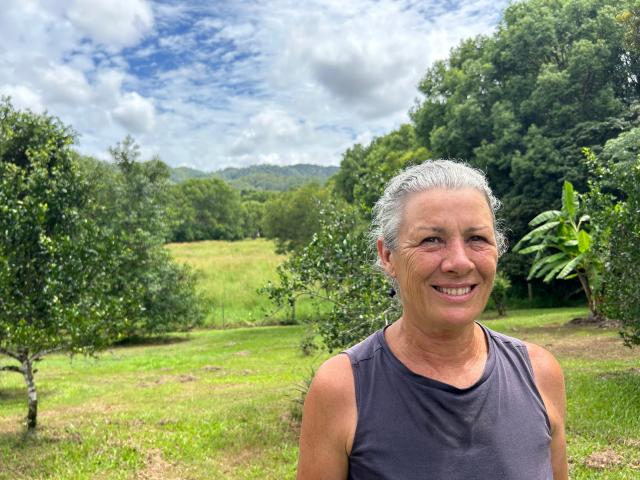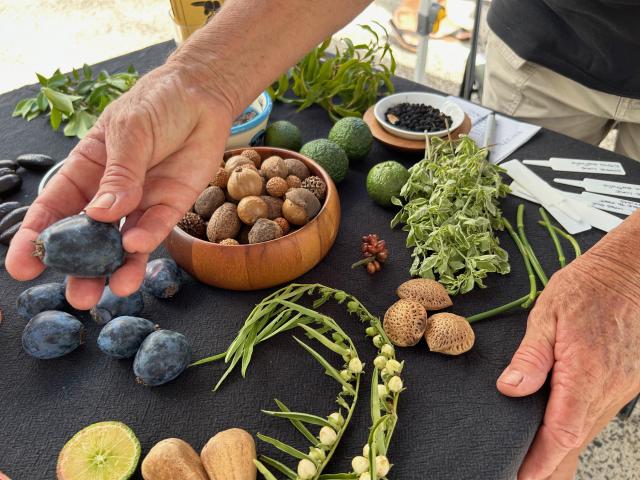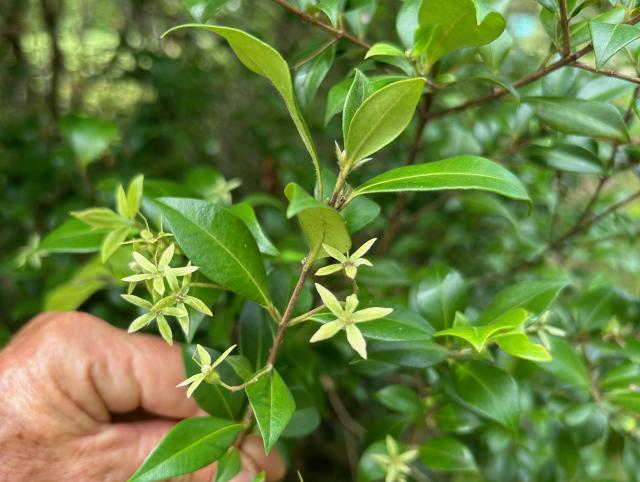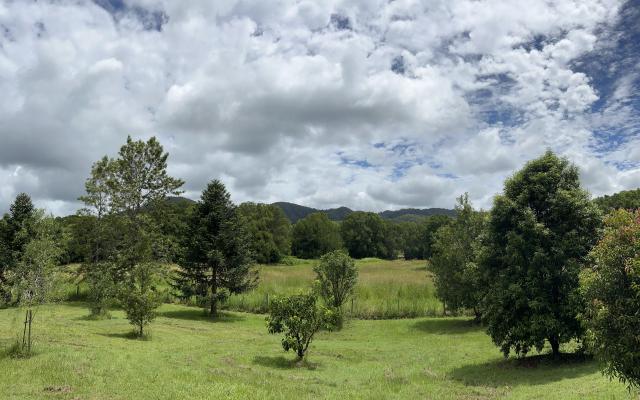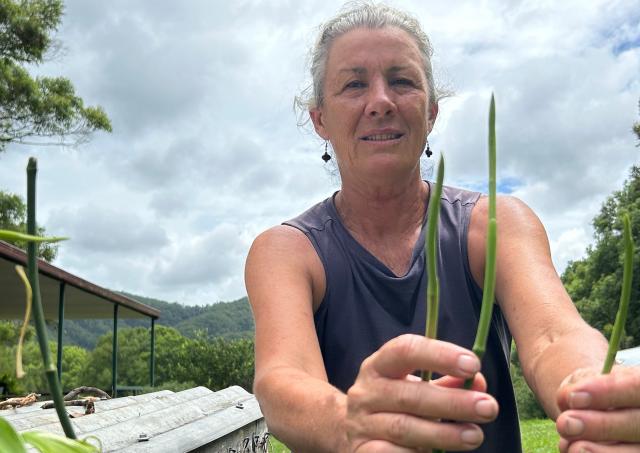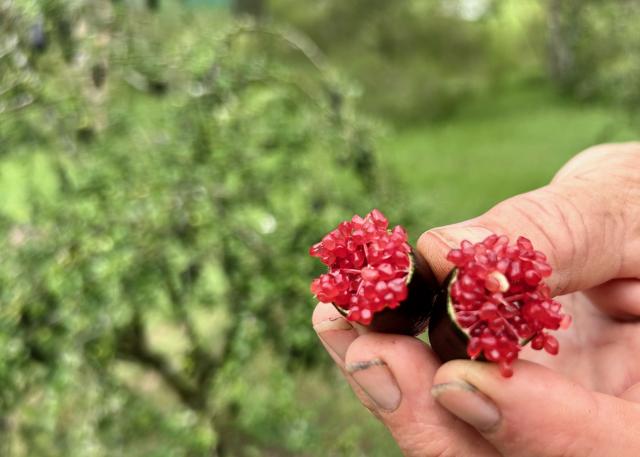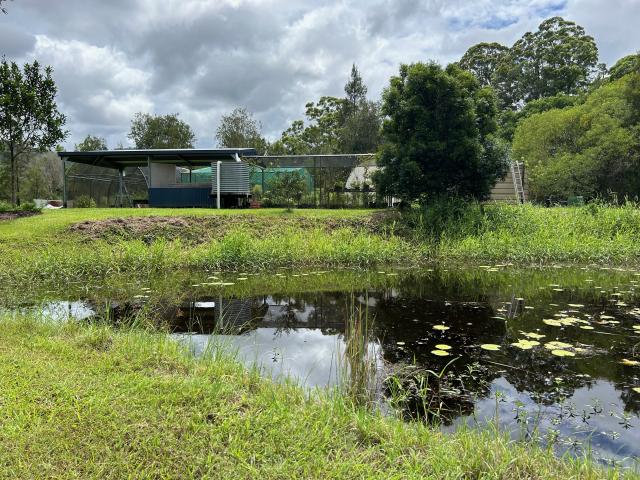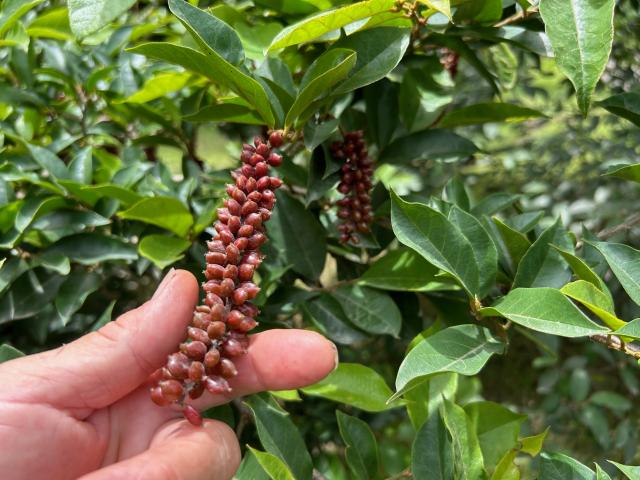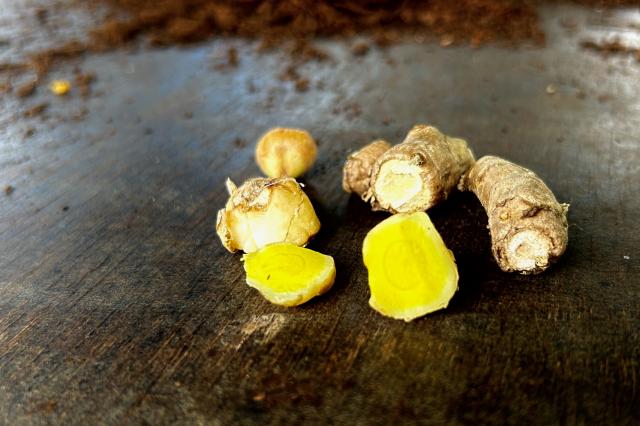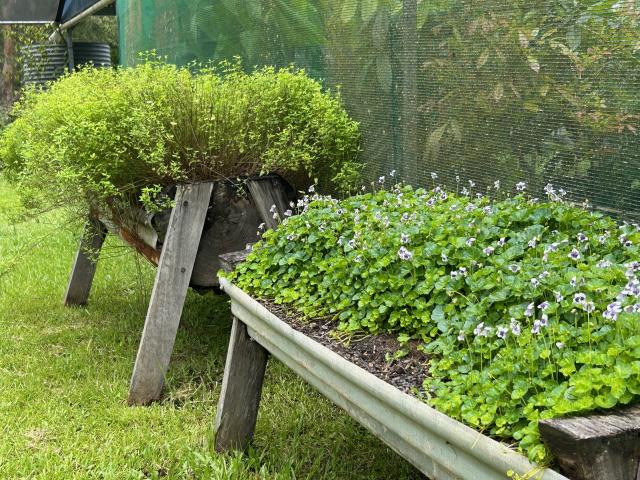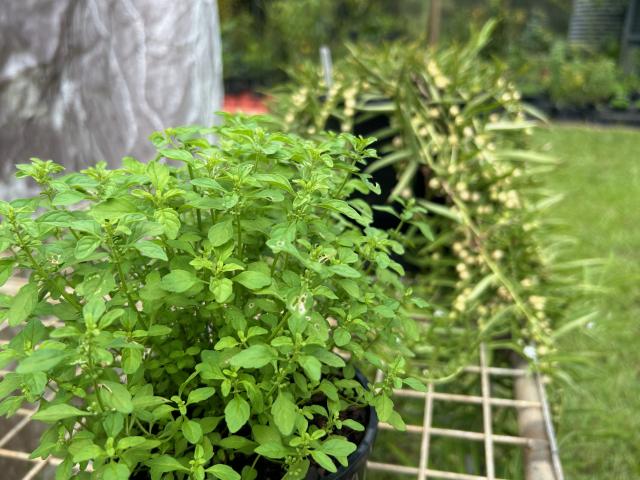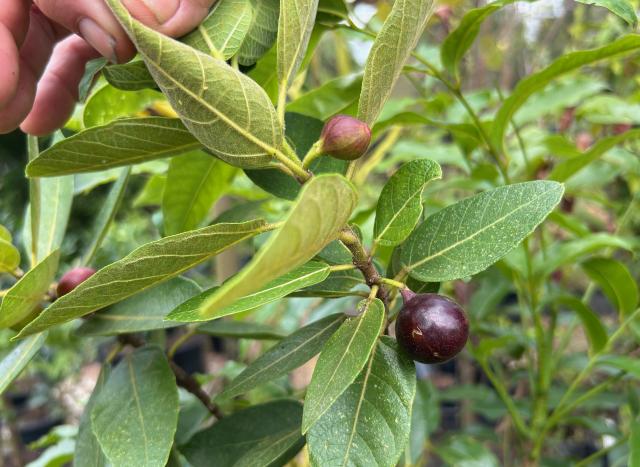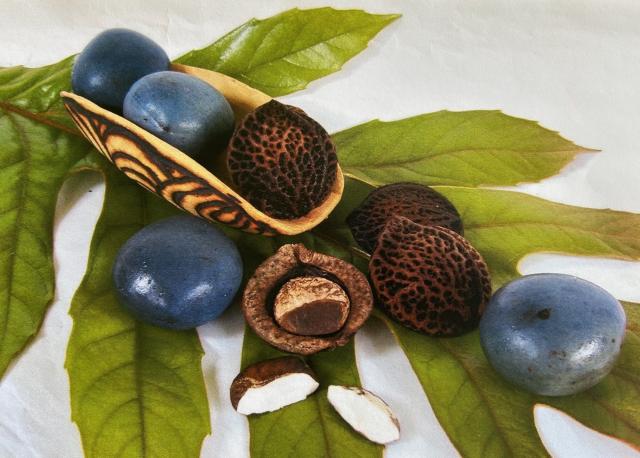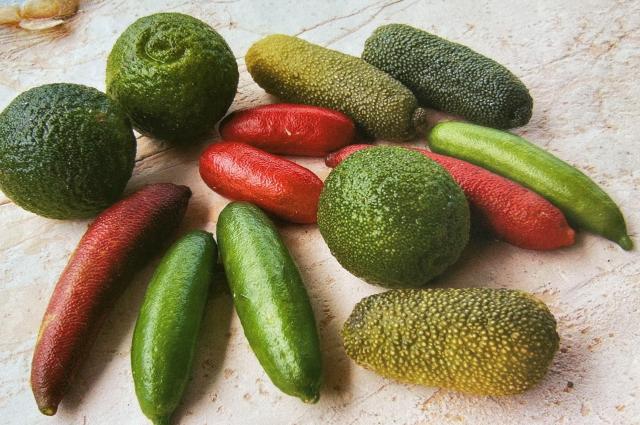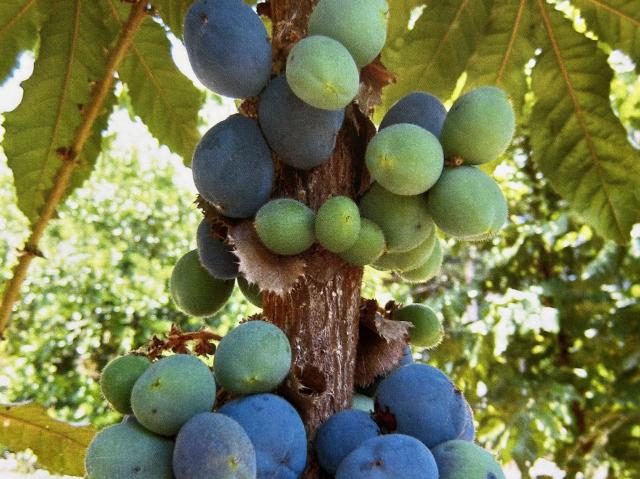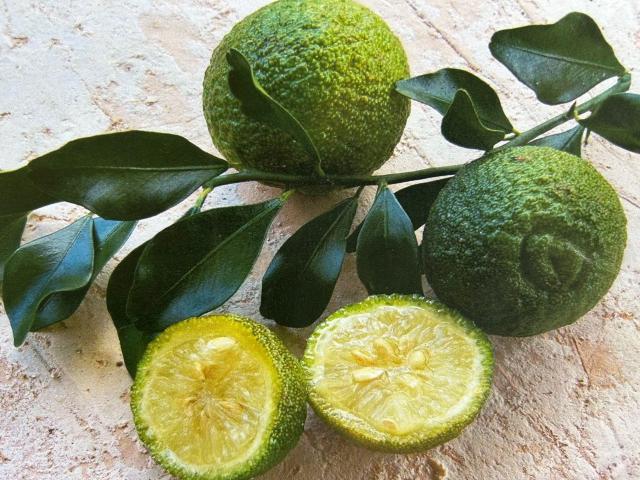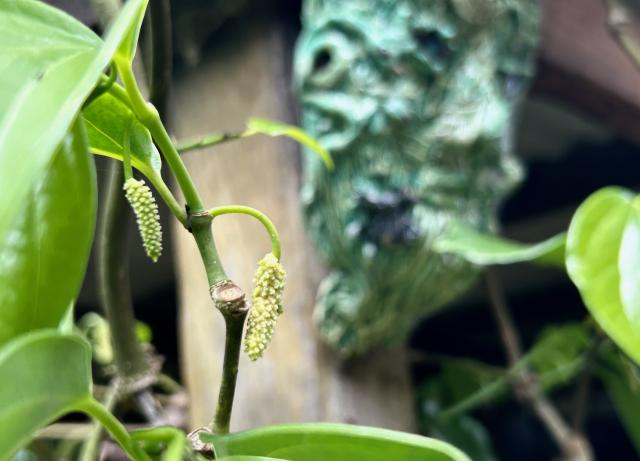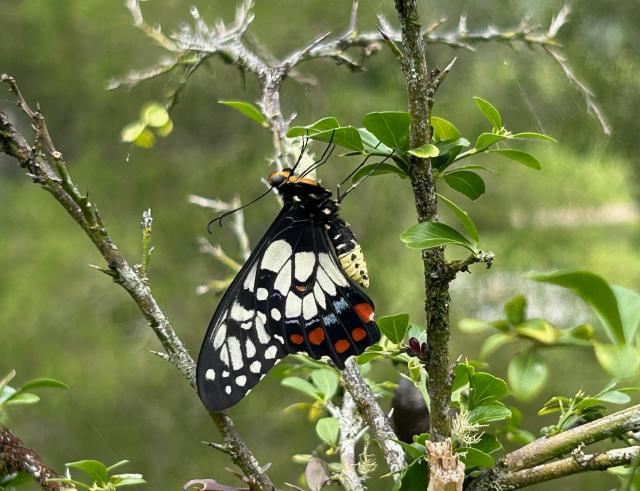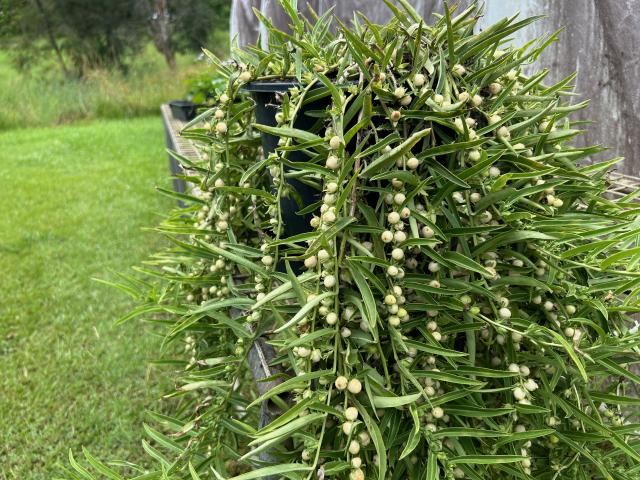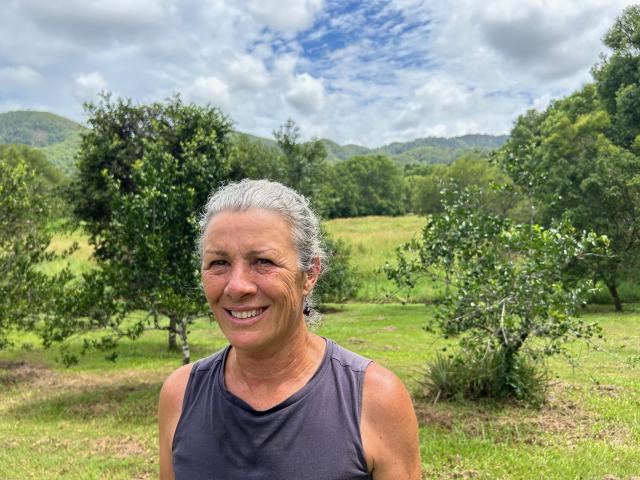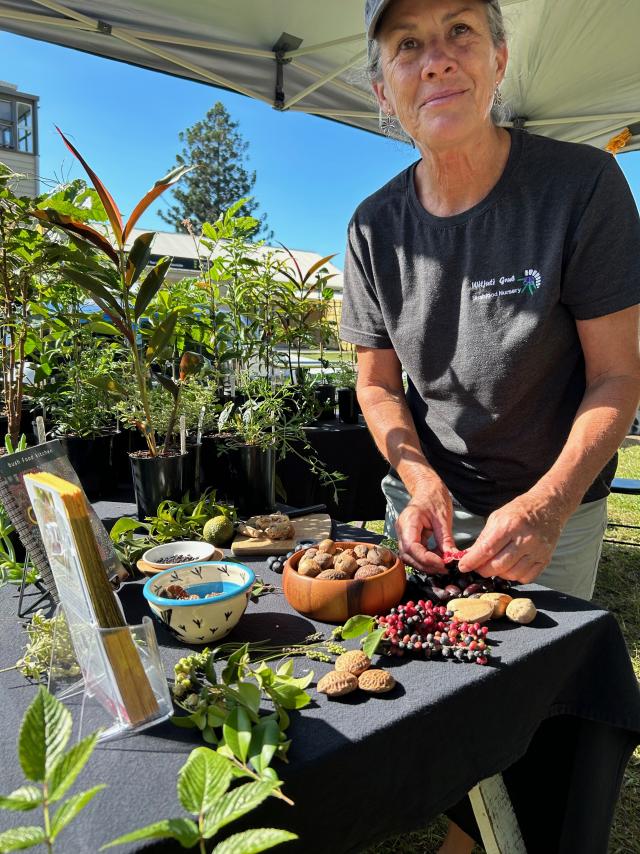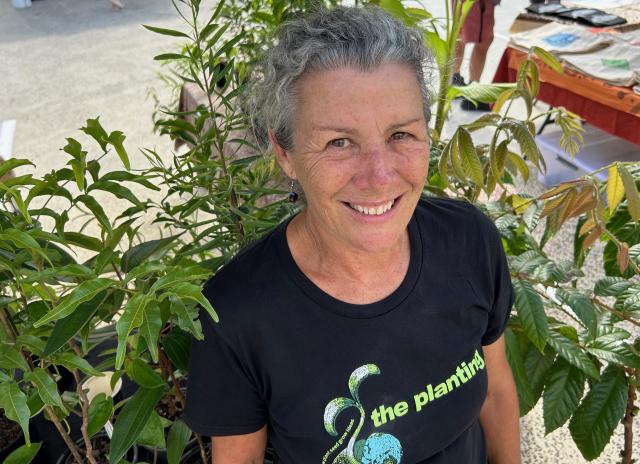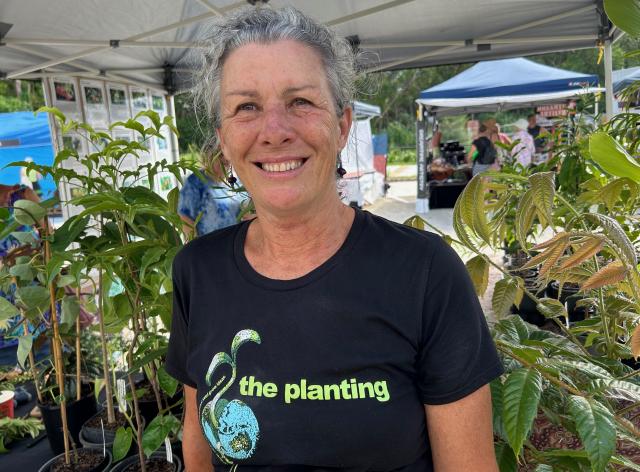Native bush foods have been part of the Australian landscape since time immemorial. ERLE LEVEY is both surprised and delighted at what can be found in the bush.
“Dad planted natives and rainforest trees, and things like that at home, so I was already very pro-native plants. The native edibles were kind of an extension of that.’’
We might travel the world yet that what we are seeking could be right at our back door.
That’s the case with bushfood plants.
Veronica Cougan from Witjuti Grub Bushfood Nursery in the Obi Obi Valley has made native bushfoods her passion.
Not only do the plants supply tasty, nutritional produce, they are stunning trees, shrubs, ground covers and vines that will turn a garden into a unique and beautiful sanctuary.
I had met Veronica a few times at markets and festivals and her bush foods had always intrigued me. Growers of native bush foods had also recommended I talk with her.
That was why we were recently enjoying a morning coffee and shortbread biscuits on the verandah of her Obi Obi property.
Veronica had been working in the nursery since sunrise and by mid-morning was ready for a break.
It’s such a pristine location in the Obi Obi Valley, and just at the foothills of the Blackall range. There’s the distinctive sound of the whip or coach birds in the bush, also the call of the channel-billed cuckoo as it prepares to gather its young before their migratory flight up to New Guinea.
The three-and-a-half-acre property is on the high side of the road and the lush creek flats, with the Kenilworth ranges further to the west.
“We’ve had consistent rain since the end of December,’’ Veronica said. “It had been one of the driest winters on record until then, and people were getting their rainwater tanks refilled.
“Since then it’s been consistent and the countryside is looking amazing.’’
Veronica’s two dams were almost dry.
That’s summer in Queensland and the humidity of the wet season means it’s hard to keep up with what needs doing – there is so much growth.
Most plants are grown by Veronica from seed but some are from cuttings.
The emphasis is on variety and ensuring the plants do not become extinct – after all, some have been around since time immemorial, from the times of dinosaurs.
The property has a north-easterly aspect, where some of the fruit trees are growing, and there’s a series of plantation tunnels, sheds and shade houses down on the flat areas.
Bush foods are planted throughout the property and, as Veronica explained, many of them are not instantly recognisable as edibles.
“You might not recognise that they’re an edible fruit or somebody points out something about them. For example, the scrambling lily, the edible new growth tips of delicious sprouts are called bush asparagus.
“The shape is like a spear of asparagus, the taste and texture is something like the pod of a snow pea.’’
Then there is the anise myrtle. Much like the lemon myrtle you can eat the tips … they taste just like an intense black jellybean. The taste is amazing.
With the cinnamon myrtle the leaves can be dried and used as a spice or as dried-flower arrangements.
“It’s called Carol,’’ Veronica said. “When the flowers are spent, the bracts that are left on the tree can be used in flower arranging as filler.’’
Veronica’s journey into bush foods started at Nambour TAFE where she was studying horticulture.
“While I was there I met a friend and we did our outcomes together. We started propagating bush food plants until we had enough to start selling them.’’
For centuries bush food plants have been an integral part of the staple diet and lifestyle of Australia’s indigenous people.
Today these native foods are being used in ways as varied as our multicultural backgrounds.
There about 250,000 species of flowering plants in the world. Yet with 10,000 years of settled agriculture only about 100 species have been cultivated as significant food plants – even fewer constitute the staple foods of the developed and developing world.
It is estimated there are upwards of 5000 different bush food plant species across Australia utilised and harvested seasonally by aboriginal people.
Bush foods played a significant part in Australia’s colonial history keeping explorers alive and settlers healthy.
They helped ensure Captain Cook’s success and the first colony’s survival. Without bush foods, explorers such as Sturt and Leichhardt would have failed in their efforts – from either scurvy or starvation.
Witjuti Grub Bushfood Nursery started in 1996-97. Veronica’s children were at school so she went from working nights at what was the Hyatt Coolum Resort to getting a day job propagating.
“It started slow. Attending TAFE to learn about propagating was a personal journey. We started discovering the bush foods.
“It wasn’t actually taught there as such – but I was realising they were here, and I knew nothing about them.
“I thought they were amazing, and I just wanted to learn more.
“I wanted to see people growing them and using them because I was wondering why I didn’t know more about them I guess.
“Looking at them in books, the pictures were just so beautiful. They were stunning plants.
“We spent a lot of time out walking, sourcing seeds and things in Sunshine Coast area … from the coastline to the hinterland.’’
Veronica was living at Woombye at the time but had bought the Obi Obi property.
Their first nursery was out towards Kenilworth and Veronica was working in other nurseries nursery on an off for eight years.
Yet her awareness of bush foods started much earlier.
“I had grown up in a family that included aunties, uncles and cousins and that, with my mum and dad, we would always go away on holidays together.
“The whole family had a pro-native plant thing going on and environmental awareness.
“So way back then, like 50 years ago, we were taking bags on family holidays and picking up rubbish off the beach.
“I grew up on the north side of Brisbane. We would go to Noosa or Pottsville, and Rainbow Beach when you’d hardly pass another car.
“So I guess it was just being in the family with that awareness.
“Dad planted natives and rainforest trees, and things like that at home, so I was already very pro-native plants.
“The native edibles were kind of an extension of that.’’
Veronica grew up at Boondall – there was no entertainment centre – it was just a dirt road down to Cabbage Tree Creek where they would fish.
“There used to be cattle down there and small crops. I used to sit on the back verandah and swing my legs over and the cattle would graze through our yard from the paddock across the road.’’
Veronica knew at first sight the Obi Obi property was the one for her.
“I was looking all over the Sunshine Coast and didn’t have a huge amount of money.
“Everything I saw was a little not quite right and then I saw a ’for sale’ sign on the road up here.
“I came and had a look at it and because I had seen a number of properties already, and found out it was within my price range, I just acted that afternoon.’’
Veronica has a wide variety of native bush food plants she is propagating – about 60 to 70 trees, shrubs, herbs, ground cover and vines – and is doing most of it on her own.
These include lemon aspen, native ginger, midyam berry, curry myrtle, finger lime and Gympie lime, a range of tamarind, beach cherry, native guava and sandpaper fig.
There is native mint, warrigal greens, native yam and native violets.
At this time a year the property maintenance is out of control, Veronica said, and it’s time consuming just trying to keep up with everything.
“I would like to plant more varieties but it gets down the list.
“We’ve had good rain so it’s coming up to a good time. The weather will cool down a bit.’’
The worst prospect for new plants is for frosts to strike in winter.
That happened on three days in August and September not many years ago.
“It was three mornings in a row and I was down there at the pump at 5.30 in the morning hosing everything down, trying to stop it from freezing the plants.
“I did that until after the sun came up but it still did heaps of damage – the frost even damaged plants in the shade houses as well, and that doesn’t happen very often.
“Putting plants in the ground, you have to be aware of where you plant things.
“This property had been part of a dairy, so it was all cleared – there were no sheltered spots to start planting things.
“You start off with the hardy stuff and then create micro-environments to put in the other plants and create a bigger range on the property.’’
There are certain plants, such as the Atherton almond, that Veronica has tried a few times and it just hasn’t flourished because there isn’t enough shelter yet.
“It’s one that I’m putting in again in the next couple weeks. I’m trying it again.
“It’s the second-most tasty nut we’ve got after the macadamia, as far as native nuts go.
“It’s like macadamia/almond, and grows okay in South East Queensland and to the Northern Rivers area of New South Wales.’’
Veronica regards the bush foods as being “incredibly flavoured.’’
It gives great enjoyment to give people tastings.
“It’s a really full-on experience, there is just so much flavour. A little bit does go a long way.
“And they’re also very nutrient-dense.
“That saying – to make your food your medicine – is very true with bush foods.
“The Davidson plum is jam-packed with vitamin C. You can just tell by the deep red colour the amount of antioxidants they have.
“They contain Lutien, which is really amazing as they are starting to use it in a lot of skincare products because it helps support collagen growth.
“The Davidson plum has always been one of my favourites, since the very first. They use the jerseyana variety, which is the Davidson plum from the Queensland border into North New South Wales.
“If it’s in a spot where it’s happy you can get 700-800 fruit in season – which is over summer – and that fruit has only got very flat seeds in it so that’s a whole lot of usable flesh.
“It offers such good value and just so beautiful, the way that it gets the pink flowers on the trunk, and then you get all of those fruits.
“Then you’ve got your North Queensland Davidson plum as well, that fruits in winter.
“It’s a really tall, slender tree – like a palm tree fern. They’re both rainforest trees and shoot up to get the light.
“Everything needs a bit of sun to get fruit on it, so a lot of the commercial growers will go with the Queensland one because of the autumn and winter fruiting, when fruit flies are not an issue.
“In summer it’s muggy, hot and humid which means fruit fly can be an issue, so that’s why it’s good to pick the fruit up first thing in the morning,
“I go out with the bucket and will pick up all the Davidson plums, bring them in here ready for processing during the day. That way I don’t have any old fruit lying around the tree and I don’t have any fruit fly issues with them.’’
That’s the same with any fruit – and anything you cut off the tree.
Good gardening means taking old fruit and branches away so they don’t spread diseases.
“If you are cutting out a fungal disease from your tree, if you drop your cuttings then all of that is just going back into your tree.
“It’s important to remove it so that there’s no pest or disease lingering around to go back on the living parts of the tree.’’
The majority of plants Veronica establishes come from seed as you are strengthening the genetic diversity.
You only have to look at the macadamia nut or bauple nut, which has its origins in the Mary Valley region about the time of the dinosaurs. It must be similar with the bunya pine.
Just like it was with the first people of Australia 60,000-70,000 years ago, it is important to obtain food from within a small radius and bush foods can help sustain low food miles.
There is a need to maintain some of the heritage seeds and plants as well, rather than be reliant on major seed companies.
The level of maintenance needed for native fruit trees is not a yes or no answer.
“You can say they’re natives, and are much more adapted to this climate,’’ Veronica said.
“You can just put them in the ground, nurture them for a little while and then let them do their own thing.
“Yet every year we have different weather patterns, so they will respond accordingly.
“You might get a great crop once every four years or something like it. If it’s out in the wild and you want them to act like fruit trees – and give you what you want every year – it takes a lot out of them.
“The Davidson plum for example, I know it’s going to start flowering in spring – so I’ll give it some compost, some fresh mulch and deep water it once a week.
“They don’t respond well to pruning, so just wait for the fruit to drop.
“On the other side of it, there’s the hardiness of the natives – such as the finger lime with its tiny leaves.
“Anything with that small a leaf doesn’t transpire much, so it’s not losing a lot of moisture up into the atmosphere.
“The dry period that we just went through from May to December, I heard that it was the driest May to December since they started recording the weather.
“The exotic citrus hardly had a leaf on them. It was just like a bare-branched plant sitting there.
“Yet the little finger limes, they stood proud and they actually produced some fruit … so they’re definitely tougher.’’
Our walk through the property finds native turmeric or Cape York lily, that has a strong earthy taste … a bit like potato.
Then there is winter apple, a hardy ground cover and edible, with sweet berries.
River mint, bush mint or native mint is sweet to taste and can take more sun than your normal mint.
The best eating on our walk of discovery was the creek sandpaper fig.
As well as supplying native food plants for the home gardener and commercial grower, Veronica conducts workshops. Included are four or five a year at Aunty Dale Chapman’s gathering place My Dilly Bag Bay at Forest Glen.
“I enjoy the workshops. I did a double workshop presentation to students at Sunshine Beach High School recently.
“They do some really good things at schools these days. There’s nothing better than teaching and you open a fruit up in front of someone, and they go ’wow’ … or they taste it.
“I love watching the expression on their face when they taste it, and especially when they appreciate it – their enthusiasm – and you can see that they’re thinking ’this is exciting. How can I use this?’
“Then they want to plant it at home. That’s what it’s all about – getting these bush foods into peoples’ backyards so they can grow it and have that really healthy produce to eat.
“It’s just incredible for the environment, we’re bringing your local species back into our backyard instead of exotics, and it really encourages the wildlife.
“As well, we are seeing birds nesting in a tree or something eating some of the fruit. I really like that because they’re so displaced these days with so much clearing and everything.
“It’s really good to keep them – to be able to call your area their home as well.’’
At the end of our walk Veronica pointed out the native bees that had been collecting the seeds of the apple berry to put around the opening to the hive.
Things such as this make you so much more aware of the benefits of being in nature and observing it.
We really do have so many surprises in our back yard that we should be thankful for, but also be aware of the need to protect the environment and keep these treasures for generations to come.

